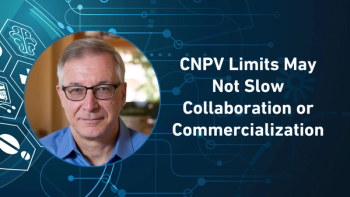
Can Dual Agonists Deliver Better Outcomes?
In the second part of his Pharma Commerce video interview, Hyung Heon Kim, CEO of MetaVia, explains how dual-action metabolic therapies can address clinical or tolerability gaps observed in first-generation GLP-1s.
In a video interview with Pharma Commerce, Hyung Heon Kim, CEO of MetaVia, describes how the current US payer ecosystem, including commercial insurers and Medicaid, exhibits a divided approach when it comes to supporting access to obesity medications. Coverage largely depends on whether obesity is accompanied by additional health complications. He explains that there are essentially two categories of patients: those who are obese without any complications and those who are overweight or obese with related conditions, such as type 2 diabetes or Metabolic Dysfunction-associated Steatohepatitis (MASH).
For patients who fall into the second category—those with complications—insurance coverage is typically available. This is because obesity-linked conditions like type 2 diabetes are recognized as serious health issues that require treatment. Payers are prepared to provide coverage in these cases, acknowledging the need for medical interventions that go beyond lifestyle changes alone.
However, for individuals who are obese but otherwise healthy, coverage remains limited. Kim highlights that the current administration does not fully recognize obesity as a disease on its own, instead viewing it as a condition that can be managed through lifestyle interventions, such as diet and exercise. This perspective means that insurance companies are less inclined to cover obesity medications for patients who do not have related health complications.
Kim suggests that this approach overlooks the broader benefits of proactive obesity treatment, which can prevent complications before they arise. While insurers and Medicaid seem prepared to handle cases with associated conditions, they are not yet structured to provide long-term affordability and access for individuals seeking preventive care solely for obesity. In essence, the payer ecosystem is ready for treatments tied to co-morbidities but lacks readiness and policy alignment for covering obesity medications in otherwise healthy patients.
He also comments on how dual-action metabolic therapies address clinical or tolerability gaps observed in first-generation GLP-1s; alternative reimbursement or value-based contracting models that could be feasible in the short term, given CMS’ decision not to finalize coverage for obesity medications in 2026; market dynamics or stakeholder misalignments that need to be resolved for next-generation weight-loss drugs to reach scale without overburdening payers (from a commercialization standpoint); and much more.
A transcript of his conversation with PC can be found below.
PC: How can dual-action metabolic therapies address clinical or tolerability gaps observed in first-generation GLP-1s?
Kim: When you look at just GLP-1s, the leader there will be semaglutide (Wegovy). They have a long-term cardiovascular study out there, so it's the first-line obesity drug right now. Now, is that a great drug? Yes, it is. People lose weight, but still, they have a lot of complications with adverse events (AEs).
The reason it's important to go into this dual action or dual agonist is that the duals give you something else. When we go back to the first question, a lot of payers and things evolving requires something else from this obesity drug, other than losing just weight. I think the dualaction, dual agonist, is going to be the key in the upcoming future. Zepbound is a GLP-1, GIP, but when you look at the GIP itself, it really doesn't have its own unique mechanisms of action [MOAs] that will help obese people. But for like ours, which is glucagon, it actually has completely two different mechanisms of action which can help obese people with losing weight, plus helping them out with better fat lean mass changes; they can lose more of the waste, they can get a little more energy burn, and those things come into play.
The other important point is that all these dual agonists are not the same. Of course, it's patent protected, so it should be different, but it's the ratio between the GLP-1 and glucagon, and the more we go into this dual agonist area, the more adverse events happen, because when you have two unique mechanisms of action, each of the MOAs can have their own AEs. For glucagon, we have similar issues with GLP-1s, vomiting and things like that. That's one of the reasons why the more advanced drugs will have more than 20% dropouts from clinical trials, because people can't tolerate it. That’s where that balance come into play.
Newsletter
Stay ahead in the life sciences industry with Pharmaceutical Commerce, the latest news, trends, and strategies in drug distribution, commercialization, and market access.





